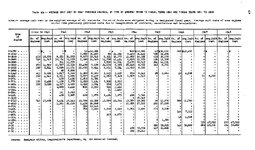Shortround6
Major General
While the XP=51F/G may have been a bit lighter they weren't really much cheaper. Which was the point of many of the light or Jockey fighters.
Saving a few hundreds pounds of aluminum out of a 6-7000lb airplane is not really that big a savings as the aluminum the airframe is about the cheapest stuff in the airplane on per pound basis. Which cost more,
75lbs of aluminum airframe structure?
75lbs of radio?
75lbs of gun/s?
75lbs of landing gear struts?
and so on.
Saving a few hundreds pounds of aluminum out of a 6-7000lb airplane is not really that big a savings as the aluminum the airframe is about the cheapest stuff in the airplane on per pound basis. Which cost more,
75lbs of aluminum airframe structure?
75lbs of radio?
75lbs of gun/s?
75lbs of landing gear struts?
and so on.


